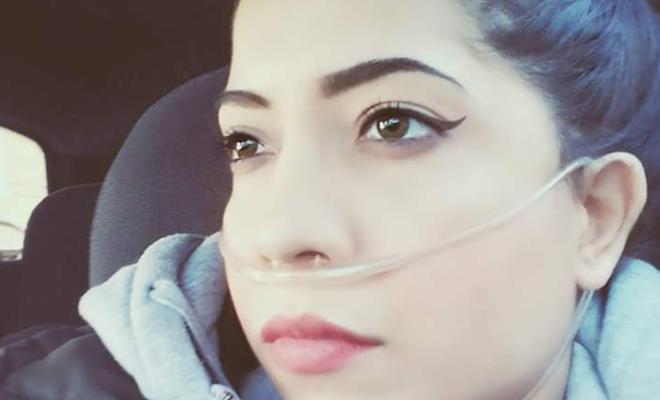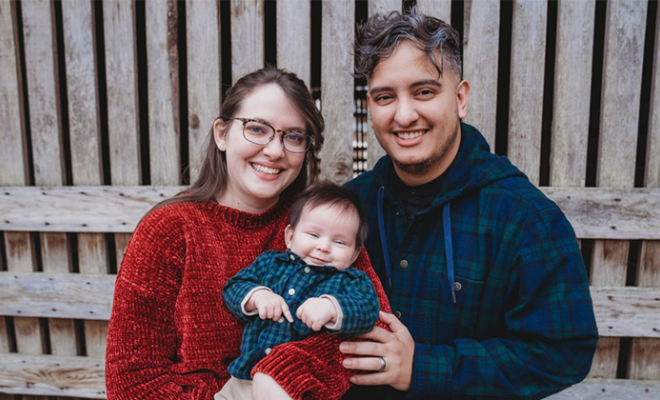I had managed pain before in my personal and professional life, yet there I was sitting on the couch in tears, while my daughter watched cartoons beside me. The ribs on my right side hurt if I moved or took a deep breath — and, God help me, if I coughed.
I had considered going to the ER. Had I broken a rib? It was two weeks until my next pulmonology appointment, and I had been out of prescription pain medication for at least that long. On top of that, I had been sick, which meant that I had been coughing more. My rotation of Tylenol® and Advil® with some Valium® (as a muscle relaxer) every few hours got me to the point where I was comfortable enough to sit on the couch … in tears ... as long as nobody touched me.
As a nurse practitioner in a hospital, I frequently encounter and treat pain of all kinds. I used to enjoy pain management. I was able to deliver relief to my patients, using both narcotic and non-narcotic methods.
That was a different time. In the midst of a very serious opioid epidemic, the rules have become stricter with regard to prescribing pain medications. Addiction and drug misuse are very real problems. Now, patients with chronic pain may be required to sign pain contracts and may be subject to periodic drug screening. There also are limits on dosage and quantity prescribed. We live in a time of mandatory specialist consults for certain patients who require more than the designated threshold of narcotics. Clinicians must balance all of this without forgetting a patient's quality of life.
Sometime around 2014, I began regularly having pain to the ribs on my right side. I remember one day walking down the hallway holding my side after performing CPR on a patient.
It was around that time that I began taking prescription tramadol (Ultram®). For a few years, I was taking it up to four times per day, rotating with Tylenol and Advil, continuing my almost daily workout routine, going to school, working, and being a father.
One day, I requested a refill and, instead of my usual quantity, I was given only enough for seven days. My pulmonologist's office messaged me and said because of new rules, this was the best they could do. I would have to request another refill when the time came.
The time came around 10 days later. After a few refill requests, I received a message from the doctor's office. They wanted me to see a pain management specialist.
As a prescriber, I understood. However, the rules do make exceptions for palliative care, chronic pain, cancer pain, etc. For all intents and purposes, I could fall into two of those categories -- chronic pain and palliative care.
As a patient, I was not thrilled about seeing a pain management specialist. If my use of pain medication had changed, or I needed something beyond Ultram, I would have been more accepting of this sudden referral; however, there was no discussion beforehand. This meant adding ANOTHER doctor to my long list of providers -- and one who could change the way ANYONE is allowed to prescribe me any controlled substance.
The referral without any context from a doctor that I had a long relationship with just didn't seem right. It became clear at my pulmonology appointment that my suspicions were correct. My doctor had been out of town, and the providers that were covering for her either were not aware of -- or were not comfortable prescribing -- my usual quantity of pain medication. They had not even given me enough medication to get me to my pain management specialist appointment, which was a month away.
In the meantime, my lung function decreased. My weight dropped between 5 and 10 pounds. I had greatly decreased the intensity and durations of my workouts, although I still tried to do a little bit. My quality of life had substantially declined. I was in such severe pain that I could not sleep. I could barely make it through the workday, collapsing when I got home. I started snipping at my daughter because her snuggles had become too painful.
My pulmonologist promptly addressed all of this. She prescribed enough Ultram to get me to my pain management appointment. However, she also told me that it was not a bad idea to get a pain management specialist on board, as this is what she had been doing with many of her CF patients with chronic pain.
Ultimately, the specialist was very laid back. He recommended an injection to the painful area between my ribs to decrease inflammation and desensitize a nerve that runs under each rib. Otherwise, if my pulmonologist was willing to prescribe Ultram -- which she was -- he said he would be hands off.
I appreciated that I was still in control of managing my pain, only now I had more options.
Most cystic fibrosis patients will have pain at some point, whether it is musculoskeletal pain, abdominal pain, or even arthritic pain. Some portion of these patients, like me, will go on to have chronic pain. I had periodic pleuritic pain caused by inflammation of the membrane that surrounds the lungs. My worst — and most frequent — pain was musculoskeletal. Some days it was there just enough to notice. Other days it felt like I had been kicked in the ribs ... hard.
My point is that pain management is tricky business. You should have a thorough discussion about the risks, benefits, and treatment options with your doctor.
Being pain-free is unrealistic in many cases, and it is important to understand this. Opiates are not always the best option. Perhaps your best alternative is a TENS (Transcutaneous Electrical Nerve Stimulation) unit, that can be prescribed by a pain management specialist, or a lidocaine patch (to numb the area). Or, like me, you could have a pain management specialist administer injections to either decrease inflammation or temporarily desensitize nerves.
Maybe the better choice is treatment for the anxiety and depression that are closely associated with severe pain, either by your primary care provider or by a psychiatrist. There is also a lot of data correlating exposure to nature, meditation, and mindfulness with improvement in pain. Each patient's pain management plan should be individualized and should incorporate multiple treatments whenever appropriate.
And of course, high-dose medications, such as opiates, need to be used judiciously where there is chronic pain. If people with CF need these medications simply to function, how is pain going to be managed after a major surgery, such as a lung transplant, where muscles and bones are pulled, cut, and stretched? As patients build a tolerance to pain medications and require higher and higher doses, their pain eventually will be difficult or impossible to adequately and safely manage. Furthermore, there is a very real risk of addiction and drug misuse. Over the years I have heard of a fair number of CF patients who have overdosed, whether intentionally or accidentally.







